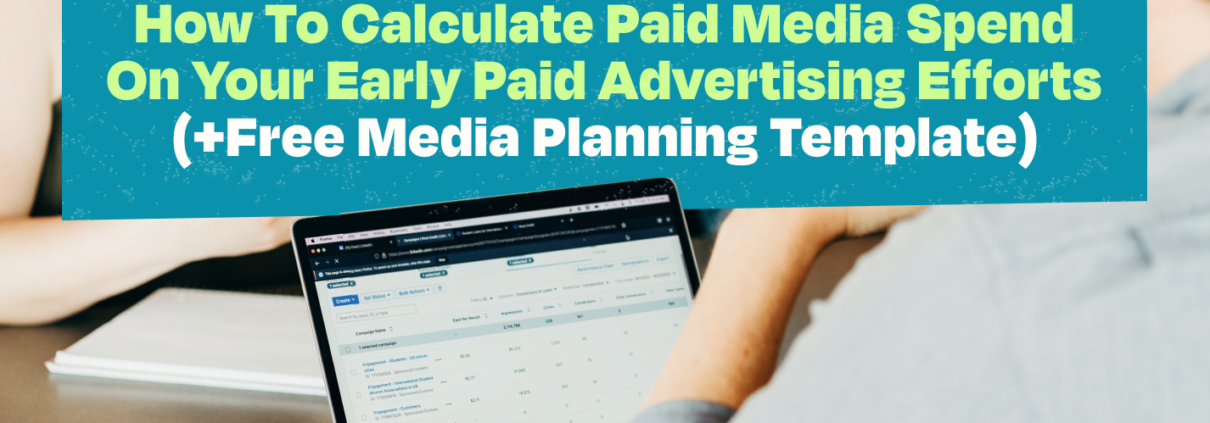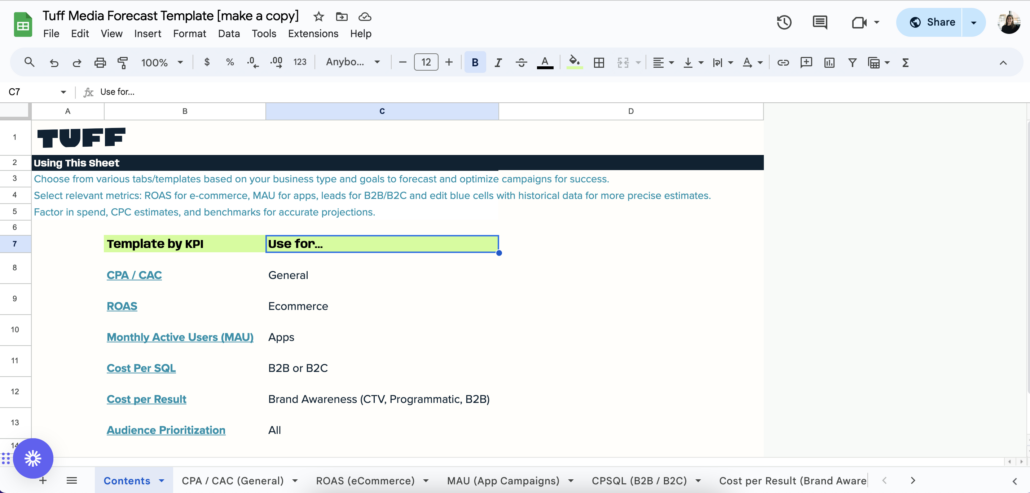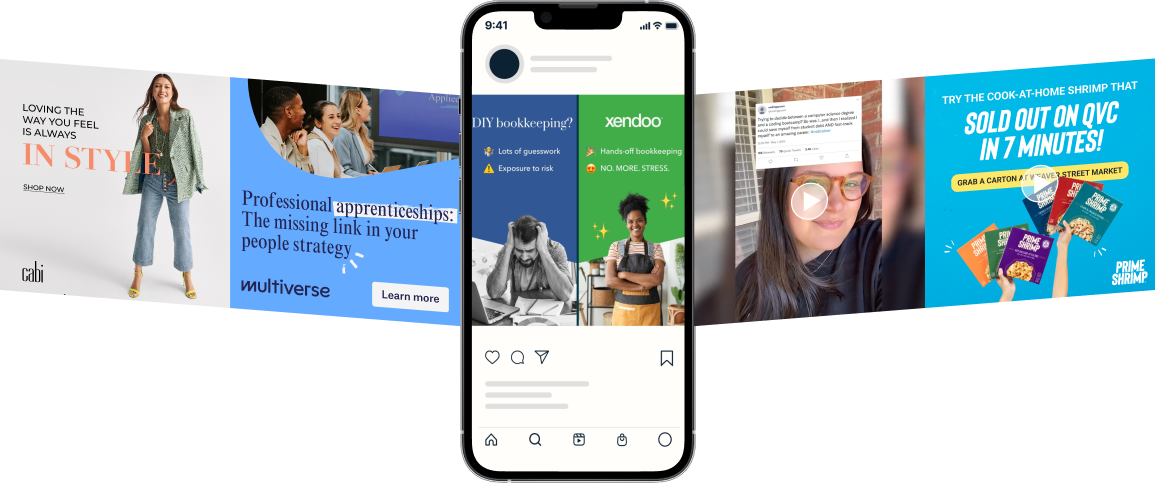How to Calculate Paid Media Spend on Your Early Paid Advertising Efforts (+Free Media Planning Template)
Starting paid media efforts for your startup might feel daunting, especially if you’re working with tight budgets or haven’t tested on paid ads before. You want to make every dollar count, especially when every penny matters for early-stage companies trying to validate PMF or discover effective channels for both traffic and conversions.
If you’re feeling hesitant about testing into paid ads due to the risk, the learning curve, or just feeling unsure where to begin, know that you’re not alone. As a startup marketing agency, we’ve partnered with countless founders and small teams who have felt the same way.
That’s why, in this blog post, I’ll share our approach to planning media spending for our partners. I’ll provide you with a template that we always start with, tailored specifically for early-stage brands with minimal paid advertising experience or data. Plus, I’ll offer some extra tips to ensure you’re fully prepared to succeed in your paid campaign efforts.
Establishing Your Campaign Goal
Before you dive into your paid advertising journey, it’s crucial to get clear on your campaign goals and set up proper tracking. This ensures you can link your paid efforts directly to your campaigns (we’ll delve into this later). With our partners, we like using Google Analytics, ad platforms data, and tapping into available customer analytics or CRM data.
Don’t worry, it doesn’t have to be overly complex. For instance, if you run an eCommerce startup, your goals likely revolve around boosting revenue and ROAS. If you’re in the B2B realm, your focus might be on generating MQLs or SQLs. Regardless of your industry, having a clear picture of what you aim to achieve and measure will steer you toward crafting the right media mix and campaign strategy.
Creating a Media Plan
Now that you’ve locked in your campaign goals, it’s time to craft your media plan. Start by pinpointing the channels that align best with your goals and allocating your budget accordingly.
If you’re unsure about which paid media channels are ideal for reaching your campaign’s goals, take a look at the tables below. They’ll serve as a helpful starting point for your planning:
PPC Channels:
| Channel | Campaign Objectives | Ad Formats | Good to Use For |
| Conversions, traffic, awareness | Search, Display, Discovery (Demand Gen), Performance Max, App Installs | Performance: driving leads and purchases, increasing revenue, driving traffic, driving app installs / Awareness: increase impressions with and driving low cost CPMs with Display or Discovery campaigns | |
| YouTube | Awareness, conversions | Video Action, Efficient Reach, Sequencing | Performance: driving conversions with Video Action campaigns / Awareness: increasing views and impressions with top of funnel reach campaigns |
| Bing | Conversions, traffic | Search | Performance: driving leads and purchases, driving traffic |
Social Ads Channels:
| Channel | Campaign Objectives | Ad Formats | Good to Use For |
| Meta | Awareness, Traffic, Engagement, Leads, App Promotion, Sales | Static Image, Video, Carousel, Dynamic ad, Shopping ad | Performance: driving leads, website conversions, or app installs with detailed targeting or list/LAL-based audiences / Awareness: increasing awareness via traffic or video campaigns |
| TikTok | Awareness, Consideration, Conversion | Video | Performance: driving website conversions or app installs / Awareness: generating awareness or engagement with organic videos |
| Website Visits, Website Conversions, Engagement, Lead Generation | Sponsored Content, Sponsored Messaging, Text Ads | Performance: driving leads via in-platform lead generation or conversions via the website with very granular targeting to reach a more professional audience |
Once you’ve honed in on the right paid channel mix, you can now begin planning your channel and budget breakout in the form of a media plan.
Leveraging Our Media Plan Template to Forecast Potential Results
At Tuff, we’ve simplified media planning with our ready-to-use templates. We made these after crafting media plans for hundreds of startups and we continue to refine them. You’ll find templates for eCommerce, B2B, app acquisition, and brand awareness linked below.
Grab the paid media planning template for startups here. And if you find this one useful, take a look at these other 13 free marketing spreadsheets and easy-to-use spreadsheets.
These templates simplify the media planning process. They’ve got columns and rows ready to go, so you can crunch numbers and estimate how your campaigns will perform. For example, you can adjust spending, CPC, and CVR to see where to allocate your budget to reach your goals.
If you’ve got past campaign data, great. You can use it to estimate CPCs and CVRs. If not, no problem. You can use tools like Google Keyword Planner or SEMRush for CPC estimates, or check out your Analytics tool like GA4 for CVR estimates.
Every quarter, we gather paid media benchmarks for all the channels we use. We look at stuff like CPCs, CPMs, app install rates, and conversion rates. We break it down by industry so we can use the latest benchmarks for our planning.
Our templates aren’t just for the initial plan. We also use them for audience prioritization. Inside, you’ll find a tab for this. We figure out who we want to target and set priorities from 1 to 5. This helps us focus on the most important audiences first. Plus, we keep track of tested audiences and their status in the ad platforms.
I’ve also made a 10-minute loom video below, demonstrating how I use this spreadsheet for media planning. It’s a hands-on example to give you a clearer idea on how to best leverage these resources. Check it out!
Maximizing Your Paid Advertising: Essential Tips
Planning your media spend doesn’t have to be complicated, but there are a few more things you’ll want to make sure you’ve got covered before launching your campaigns, as well as some checkpoints to keep an eye on during the campaign run.
Configure Your Tracking
First, as I mentioned above, it’s crucial to ensure that before you even spend a penny on your paid media efforts, that you have goal tracking fully established and working properly. This doesn’t just mean having a GA4 or Hubspot account created. You need to first set up conversion events in your analytics platform or CRM, as well as within your ad platforms to ensure that you are tracking all necessary goals and events that you want to track and optimize towards.
You also want to ensure that you are tracking all of the necessary parameters to be able to distinguish traffic from each campaign by providing each ad with a UTM link. This should include the source of the campaign, (Google, Meta, etc.), the medium of the campaign (such as CPC), and the campaign name, at a minimum. Additionally parameters like content help to distinguish between individual keywords or ad creatives which lead to your goals. All of this is important information and is necessary to properly attribute results back to individual campaigns.
Many CRMs and analytics platforms attempt to make this as easy as possible by providing direct integrations into the most popular ad platforms which can often automatically create UTM tracking links for you. However, be sure to test your links to ensure that the traffic is being properly attributed in your CRM or analytics platform.
Continuously Test and Iterate on Your Campaigns
While launching your campaigns is exciting, the work is only just beginning. To truly find success, it’s important to constantly be iterating on your campaigns to help improve the performance and move the needle closer to your goals.
While these could mean testing new channels or campaign types, it could also mean testing and optimizing within your originally launched campaign structure to find the areas of success that you can scale, as well as the areas that need improvement or should be removed if they are not helping you achieve your goal.
Some key areas which help you optimize your campaigns include testing new creative and using a creative testing framework to identify top performing assets, split-testing ad variations with unique ad copy to find what’s resonating best with your audience, and adjusting bidding strategies within the ad platforms to help you achieve more efficient results.
This list is not meant to be exhaustive, but rather provide a starting point of ideas that can be implemented to continuously test and improve on the performance of your paid media campaigns.
Get Ready To Make the Most of Your Campaigns
If you’re new to launching paid media campaigns or deciding where to focus your budget, getting your media planning right is essential for reaching your goals.
Following a few simple steps will help ensure that you are on the right track:
- Begin with clearly establishing your goals and choosing the right channel and campaign type mix which will help you best achieve these goals.
- Plan your media spend accordingly and create various estimates and scenarios to help provide a path forward.
- Ensure that you are tracking your paid efforts and conversion events accurately to receive the correct attribution to optimize your efforts.
- Continuously test and iterate on your campaigns to fine-tune your performance with new creative, ad copy, bidding strategies, and more.
If you’re eager to learn more or need some extra support, let’s chat. We can discuss teaming up on your paid efforts, going over the media planning templates, and giving you personalized recommendations.

Chris is a PPC Strategist based in Nashville, Tennessee. When he’s not scaling Google Ads & YouTube campaigns, he enjoys longboarding, tinkering with automation tools, and a little bit of gaming.








